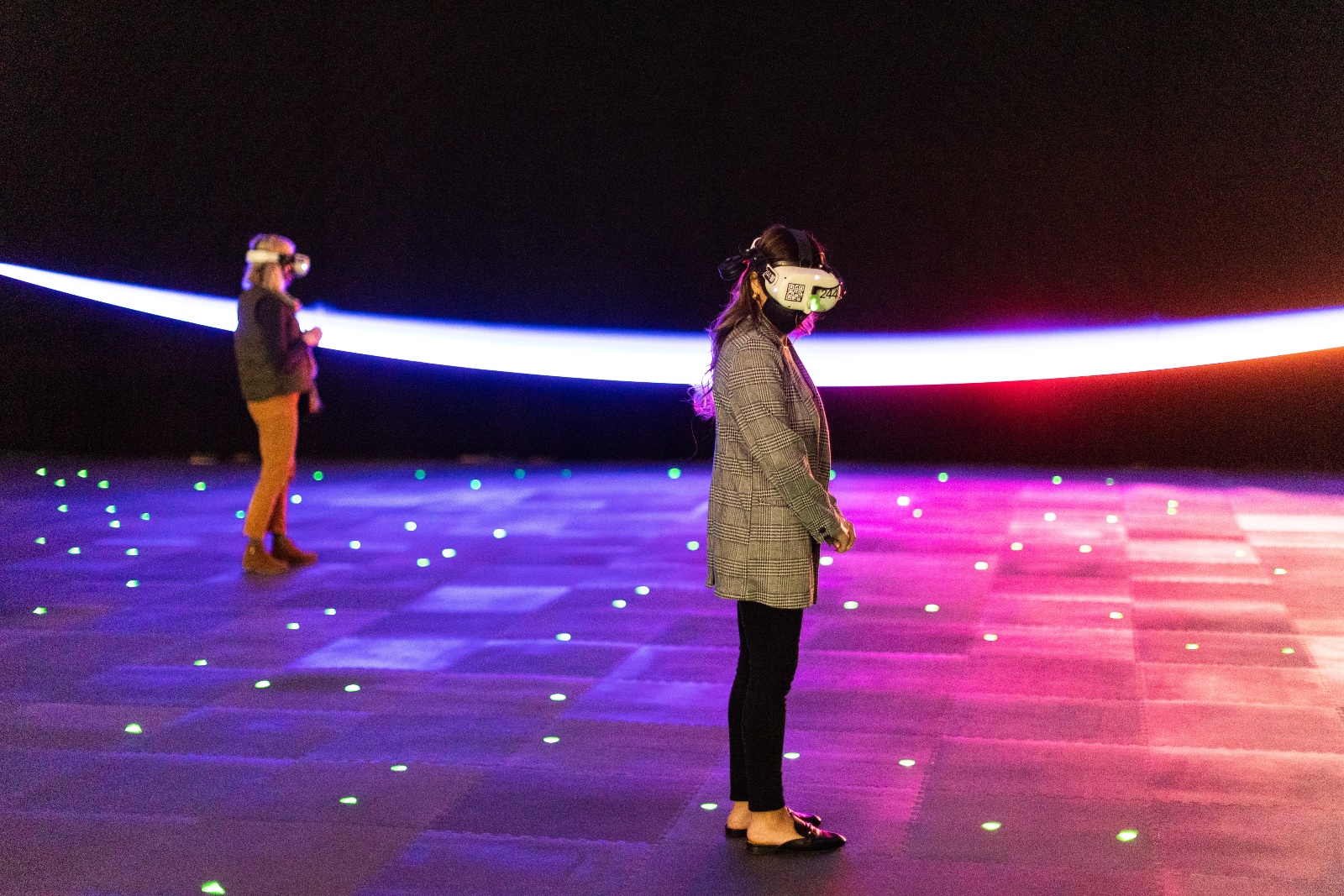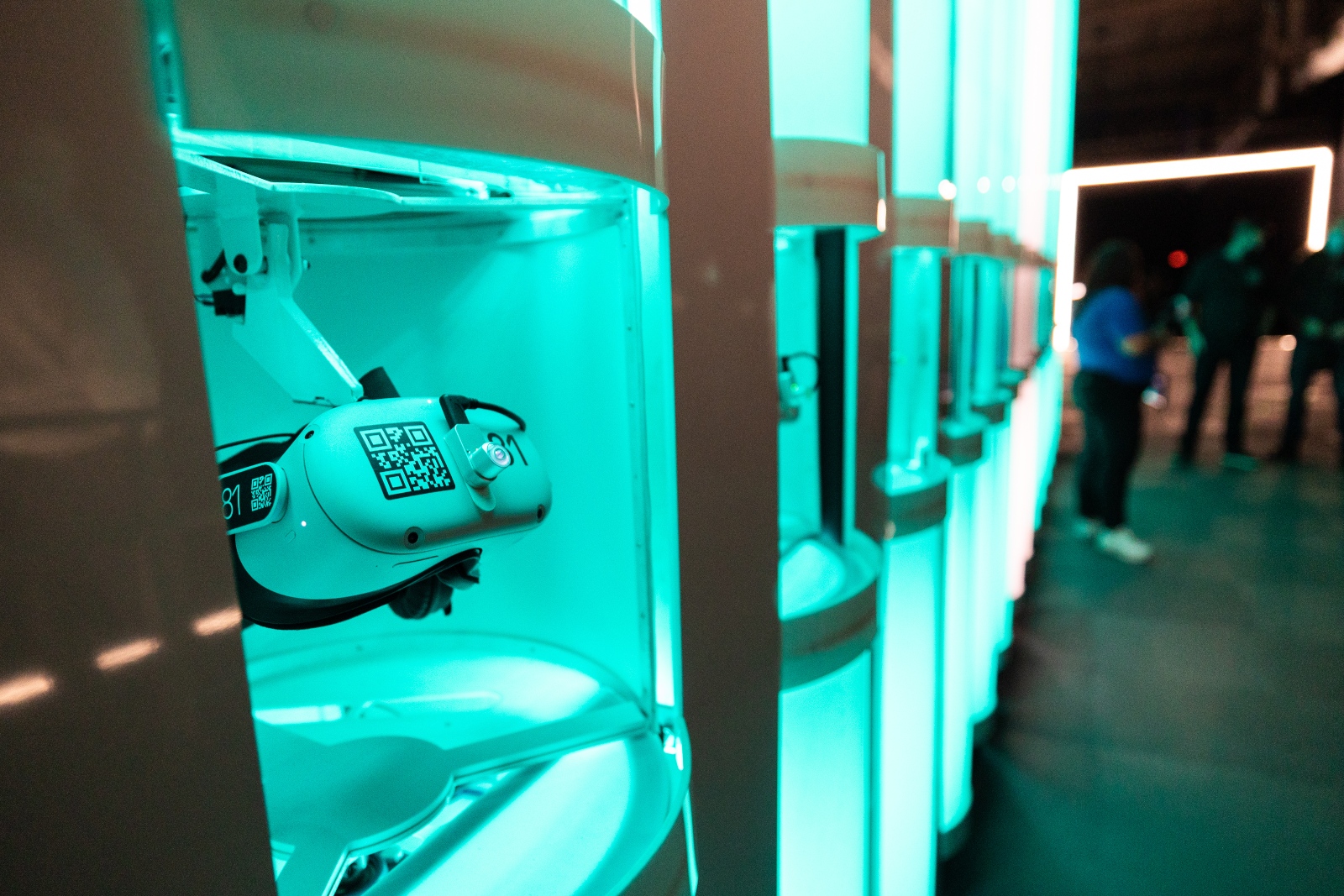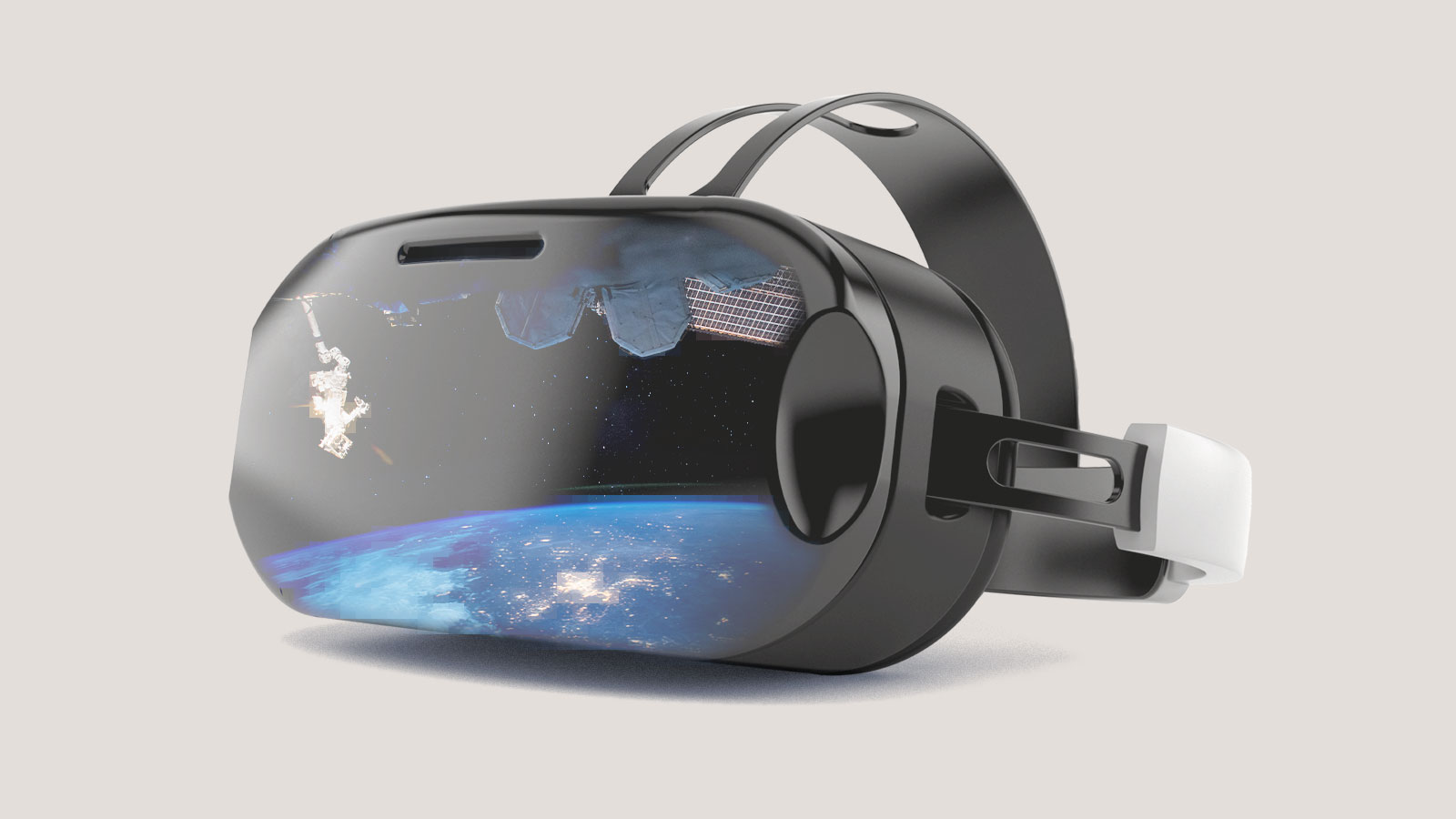The International Space Station hovered before me against a black, starry sky. Looking down, I couldn’t see my feet at all, just the curved, blue shape of the Earth. I was only a few minutes into my tentative spacewalk when I was interrupted by a flash of red text across my screen: A staff member was trying to talk to me. Had I done something wrong already?
No, at least not yet. My virtual reality headset’s battery was evidently running low and needed to be switched out. I clumsily removed it, then looked around the dark room, sneaking a peek at my fellow space explorers. A handful of people wearing VR goggles were roaming the polished floors of the hall, which spanned almost half the size of a football field. I was inside the “The Infinite,” a virtual reality experience currently in Tacoma, Washington, that transports you to outer space for the low cost of $50.
Then, with my new, fully powered headset equipped, I was back at the International Space Station, free to wander around and walk through walls. Blue, floating orbs were spread across the area, and when I reached my hand out to touch one, the scenery would change, immersing me in 360-degree footage of daily life aboard the ISS. I watched astronauts gather around a table, eating bars of ambiguous space food, and looked over the shoulder of one staring out the window, admiring the view of Earth.
Astronauts say that seeing the planet from space for the first time can be a life-changing moment, filling you with awe, transcendence, and a sense of cosmic connection. The Earth looks fragile, protected from the hostility of space by only the thin blue line of the atmosphere. The so-called “overview effect” can be weighted with responsibility — in fact, it has prompted a number of astronauts to advocate for environmental causes (you’d be surprised how often they make an appearance at global climate conferences).
Space tourism is now a thing, thanks to billionaires like Jeff Bezos, Richard Branson, and Elon Musk. But real-life journeys into orbit are, for the moment, only accessible to astronauts, celebrities, and the super-rich. Experiences like the “The Infinite,” however, teleport people to outer space for a tiny fraction of the cost (and the pollution).
Proponents of the overview effect say that its environmental effects may be replicable on the ground, at least to some degree. But my recent virtual journey suggests the technology, as mind-altering as it is, is still a ways off. It’s hard to lift off into transcendence when on-the-ground annoyances — low batteries, the weight of the VR headset, the inescapable presence of gravity — keep reminding you that you’re still on the ground. You can’t force the overview effect, but you can glimpse it, momentarily losing yourself and suspending disbelief.

On a scale of zero to outer space, “The Infinite” is about halfway there. Some reviewers declared they had experienced the overview effect, and the exhibit is realistic enough that it reportedly brought a former member of the ISS to tears. There’s other evidence that VR experiences can evoke some level of emotion. A virtual reality lab at the University of Pennsylvania simulated shooting people into low orbit and found that they reported feelings of awe, though at a much lower intensity than actual space travelers.
That matched my experience of “The Infinite,” an exhibit unlike anything I’ve seen before. The VR technology was impressive: My first few steps into the exhibit felt nerve-wracking, as if I might fall into the starry void at any moment. At one point, I ducked to avoid a football thrown by an astronaut, an instinct unshaken by the fact that the football was merely an apparition. Other real-life people walking through the space were depicted as sparkling, celestial avatars. Red bars would flash when I neared a wall, preventing me from bumping into anything (an impressive feat when you have a poor sense of spatial awareness like me).
The footage, filmed over three years by astronauts aboard the ISS, gives you an intimate glimpse into life in orbit. The small details stuck with me, like watching an astronaut’s ringlets of dark, curly hair hovering above her head, floating in space. I spent as much time as I could looking down at Earth and craning my neck to see that the view did, indeed, extend all around me. The planet was huge, covered in swirling clouds and vast oceans, mostly shadowed as the sun rose in the sky.
I came across a few scenes in “The Infinite” that explored the environmental insights of living in the ISS. In one hallway, an astronaut said that many species were going extinct, and that if we weren’t careful, humans would go extinct too. Another looked out the round window of the domed cupola, gazing at the Earth and talking about how precious our planet is and how important it was to take care of it.
From the vantage point of the ISS, the signs of climate change are already visible. Astronauts have gazed down upon green mountains that used to be covered with snow and ice. Last year, flames and smoke plumes from the California wildfires could be seen by the naked eye.

Looking back at Earth in my VR-induced daze, I was struck by the same feeling I get gazing up at the stars on a clear night, seeing the faint bands of the Milky Way smeared across the sky: bewildered by the size of the universe and how small I am in comparison. Walking out of the exhibit felt like exiting a movie theater after a matinee, squinting as the bright daylight reminded me where I was — a shock after my mind had temporarily been transported somewhere else. I was immediately greeted by the smell of car exhaust.
The trip to “The Infinite” was an exercise in possibility: Of all the ways we could have set up our lives and built up this world, why would we do it like this? With car exhaust in all of our faces? Looking down on Earth from the ISS, borders are invisible; you forget about the limitations of politics. For a moment, the current terrifying state of the world doesn’t feel so inevitable. It’s a shift in perspective, even if it’s not quite as mind-blowing as actually being in space.




